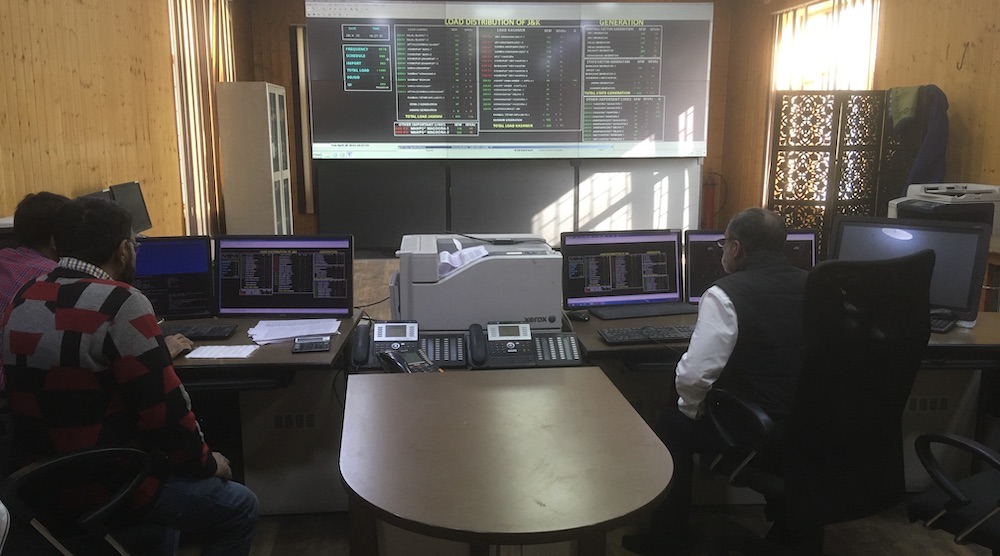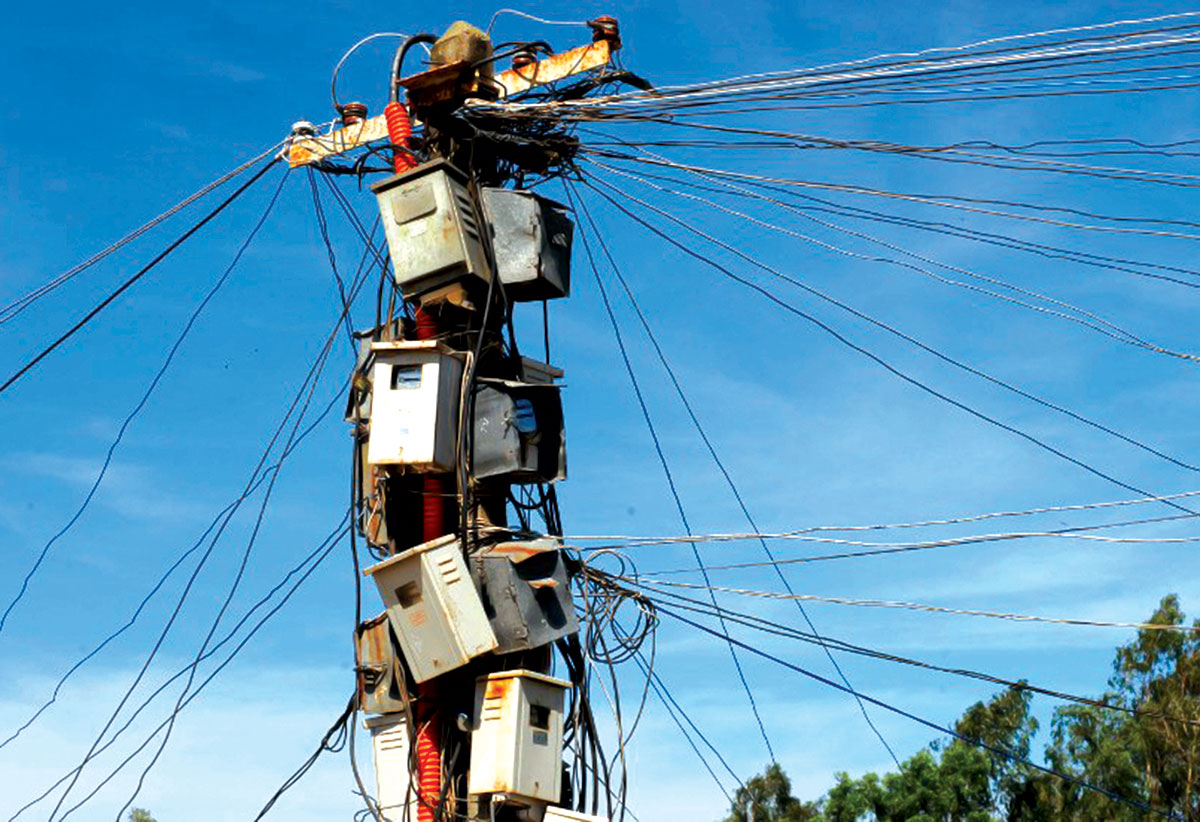In spite of the claims that Jammu and Kashmir will soon have an uninterrupted power supply, the situation is worsening as the winter has almost set in, reports Yawar Hussain

Amid ambitious claims that Kashmir will have a round-the-clock power supply, consumers are caught in a double whammy. As the mercury is dipping paving the way for Chillai-Kalan, the 40-day of the harshest phase of winter, the load-shedding has started impacting the routine.
Within days after the Kashmir Power Distribution Corporation Limited (KPDCL) started collecting “inflated” monthly tariffs with a hike of eight to 22 per cent from October 2022; Kashmir consumers are witnessing 31-hour to 56-hour weekly power curtailment schedules. The non-metered areas are facing eight-hour power cuts and metered areas for 4.5 hours on daily basis.
Power managers said the demand stands at 1900 Megawatts (MW) and is expected to cross 2000 MW in January. The supply is just 1600-1700 MW.
= Srinagar, the main consumer in Kashmir, is suffering. Unlike Shehr-e-Khas, the up-town areas used to have a better supply. This distinction has faded in the autumn gloom. In Solina, residents said they invariably have an 11-hour cut every 24 hours.
The situation in the periphery is worse. In Kupwara’s Lolab, scores of villages claim to have electricity for four hours with a very low voltage. Most of the residents, off late, have shifted to solar-powered lamps and inverters.
“Electricity is a luxury we are not entitled to,” a resident of Surigam said. “Earlier, we used to demand it but now with solar-powered equipment, we, at least, have given up lighting candles.”
In the Kangan (Ganderbal), residents protested outside the Sub-District Magistrate’s office against erratic power cuts amid inflated bills being issued by the department.
This summer, Charar-e-Sharief witnessed the installation of meters. Mohammad Yaqoob, a former school teacher said the local power division and the SDM had assured them that the power supply would improve if meters are installed. “They are now hiding in their offices,” Yaqoob said. “Nothing improved. The electricity is off for eight hours but even when it is around, the voltage level is very poor.”
Revised Tariffs
Days after the Joint Electricity Regulatory Commission (JERC) of Jammu and Kashmir approved, the power distributors in Kashmir and Jammu received power bills with costs hiked from eight to 22 per cent hike in domestic, industrial, commercial and agriculture power tariffs.

The revised tariff has not changed the BPL power supply set-up – Rs 1.25 per unit for up to 30 units per month. For domestic category consumers, requiring 200 units per month, the rate is unchanged – Rs 2 per unit. However, in the case of residential consumers requiring 200 to 400 units per month, the rate will be Rs 3.50 per unit (a 6 per cent hike in 5 years) and for more than 400 units per month, the rate will be Rs 3.80 per unit (a hike of eight per cent in 5 years).
In order to convey that the energy is still cheaper, the order said the rates for the same quantum of energy are Rs 5.95, 6.25, 7.30, 7 and 8 per unit in Himachal Pradesh, Uttarakhand, Punjab, Haryana and Delhi, respectively.
The order revised the fixed charges also – from Rs 5.50 per Kilowatt (KW) per month to Rs 8, the charges for flat metering shall be Rs 175 for the first quarter KW, then an increase of Rs 200 for every quarter KW till a load of 2 KW, beyond which the charges will be Rs 500 for every quarter KW.
In the Commercial category, for single-phase connections, for up to 200 units per month, the rate now is Rs 3.10 per unit, an increase of 7 per cent in five years, for 200 to 500 units per month, the rate will be Rs 4.70 per unit, an increase of 9 per cent in five years and for more than 500 units per month, and for three phase connections at any usage, the rate will be Rs 5.10 per unit.
The order further stated that the fixed charges shall be marginally increased from Rs 44 per KW per month to Rs 60 for single-phase connections, from Rs 104.50 per KW per month to Rs 130 for three-phase connections and the charges for flat metering shall be Rs 500 for every quarter KW.
In the Agricultural sector, the charges have been rationalised at Rs 0.80 per unit for connections up to 10 HP, Rs 1.00 per unit for connections from 10 to 20 HP and Rs 5.25 per unit for larger connections beyond 20 HP. The fixed charges have been rationalised at Rs 30 per HP per month for all connections.
For supply to the Government sector establishments, the rates will be Rs 6.90 per KVAh and the fixed charge of Rs 40 per KVA per month for all central and government departments. The rates will be Rs 7.50 per unit and the fixed charge of Rs 60 per kW per month for pubic street lighting, or Rs 3500 per kW per month at a flat rate. The rates will be Rs 7.50 per unit and the fixed charge of Rs 60 per kW per month for LT public water works. The rates will be Rs 7.10 and Rs 7.00 per kVAh for 11 kV and 33 kV connections respectively and the fixed charge of Rs 250 per kVA per month for HT public water works. The average increase in these rates has been around 25 per cent, at par with the rate of inflation over the past 5 years.
The Problem
The power department is facing the music for purchasing a lot of energy and then failing in realising the costs. Apparently, this all is being attributed to the consumers.
In 2020-21, Jammu and Kashmir consumed 18091.384 MU of energy. The total power that was generated in Jammu and Kashmir was 16165 MU. Of this, 3728.635 million units were generated by Jammu and Kashmir’s wholly-owned Power Development Corporation (including 2657 million units by 900-MW Baglihar) and 12437 million units by the NHPC run eight projects scattered across Jammu and Kashmir and Ladakh. Since most of the NHPC generation wheels out, Jammu and Kashmir has to purchase a whopping 14362.749 MU from the Northern Grid.

While the PDD purchases energy, it is unable to pay for it. Even Lt Governor Manoj Sinha said: “Power theft and losses due to the T&D are very high. We buy power worth Rs 6000 crore annually; get only Rs 2600 crore revenue while our loss figure is Rs 3400 crore.”
Apparently, it is the consumer who fails the system. That, however, is not the case.
Inside KPDCL
The situation gets clearer only after interacting with KPDCL managers. Most of the problems are in the run-down distribution system. The hype around smart metering, notwithstanding, the KPDCL has meters placed at just 9 per cent of its Distribution Transformers, a major reason for its technical losses.
Official data suggests the metering at the consumer end is 31 per cent but the dismal DT level metering is being brushed under the carpet. The 69 per cent of non-metered consumers also include government own facilities.
Last year, an audit report came down heavily on the department for not doing enough on the DT metering front. “The technical losses are due to energy dissipated in the conductors, transformers and other equipment used for transmission, transformation, sub-transmission and distribution of power. These technical losses are inherent in a system and can be reduced to a certain level. Ideally, the reduction of technical losses should be the parameter for the evaluation of the performance of the Discom sector. However, the technical losses of the discom are not available,” the audit report states.
The KPDCL’s Transmission and Distribution (T&D) loss stands at 65 per cent in which the technical losses aren’t available while the transmission losses are 548.76 Million Units (5.40 per cent) of 10162.14 Million Units (MU) of input energy last year. Last year, against 9613MU of energy input, the KPDCL billed only 3346.88 MU leading to a commercial loss of 6266.38 MU. The Aggregate Technical & Commercial (AT&C) losses, which are T&D losses together with loss in collection of billed capital, of KPDCL, stand at 69 per cent.
The audit has pointed out that AT&C losses of the KPDCL are on the “higher side compared to other Discoms.”
Interestingly, KPDCL’s collection efficiency at 90 per cent is best. Last year, it collected Rs 476.23 crore against raising bills worth Rs 537 crore to residential consumers. It collected Rs 2020 crore from industrial-LT consumers against a billed amount of Rs 240 crore. However, from the agriculture sector, it could raise only Rs 30 crore against a bill of Rs 90 crore.
Even though the loss in the collection was recorded with these consumers, the biggest defaulters in payments continue to be the government departments. Out of the Rs 9321.71crore arrears from across Jammu and Kashmir, the government departments owe Rs 5935.04 crore, including Rs 1864.20 crore to the Kashmir Power Distribution Corporation Limited (KPDCL) and Rs 4070.84 crore to Jammu Power Distribution Corporation Limited (JPDCL). Last year, the Irrigation and Flood Control Department owed the highest amount of 415.56 crores to KPDCL followed by the Home Department which owes Rs 206 crores and the Housing and Urban Development Department which owes an amount of Rs 106.36 crore.
The industrial and commercial establishments have electricity dues of Rs 1462.33 crore, including Rs 581.81 crore to the KPDCL and Rs 880.52 crore to the JPDCL. As far as the domestic consumers are concerned, their pending electricity dues to the KPDCL are Rs 828.39 crore and Rs 1095.95 crore to the JPDCL.
A Bubble Burst
Officials at the highest level have been asserting that they will be in a position to supply better power. In March 2022, Lt Governor Manoj Sinha said that areas with smart meters, which are being installed in many areas, will be made free of any power cuts. This was follow-up to his January 2021, statement that Jammu and Kashmir would turn from a power deficit to a power-surplus region within four years with 24 hours power supply.
To reach that goal, Jammu and Kashmir will have to go a long way.

On the load shedding, KPDCL chief engineer Javed Yousuf Dar said the curtailment schedule is the same as it was in 2021. “Improvement is happening. Some four years ago, we would provide 1200 MW during peak hours while currently, it goes up to 1650-1700 MW in peak hours,” Dar said, “We will stick to the schedule and avoid any unscheduled power cuts”. Justifying the revision, Dar said it was overdue. “Generally, the hike is 8 to 12 per cent.”
Dar claimed that consumers are using electricity way beyond their registered loads. “The people need to stick to their agreed loads because using power beyond their capacity overloads the transformers and feeders,” he said.
Recently, Deputy Commissioner Ganderbal landed in the eye of a storm when he issued orders against the sale of heating equipment in his part of the territory. Facing backlash, the Babu did remove the order leaving one wondrous whether people at the helm of affairs feel the nipping cold or not.
from Kashmir Life https://ift.tt/svImZPi
via IFTTThttps://kashmirlife.net
No comments:
Post a Comment